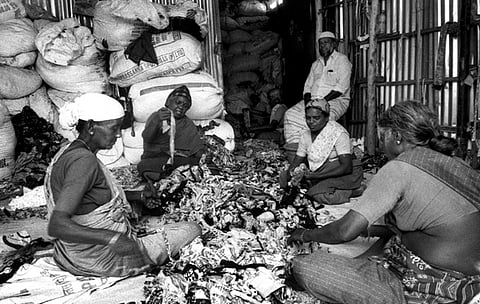In mid 2012, after having started working with garment workers in Bangalore, I was compelled to gain a deeper, pan-Indian understanding of the industry. Gurgaon and Tirupur, at different ends of the country, are, apart from Bangalore, the other two places in India on the global map of garment manufacturing districts.
Gurgaon
Making my way to Kapashera on the outskirts of Gurgaon – which borders the national capital New Delhi – the grotesquely large buildings emerging from the fog looked right out of a Chris Marker film. When the sun slowly eats up the winter fog, a flurry of people can be seen grappling with the unending rat race. Gurgaon, a city still under construction that contains Asia's largest Special Economic Zone, is now home to thousands of rural migrant workers uprooted by the agrarian crisis. They stitch and sew for export in over 1500 manufacturing factories, or units. Due to stiff competition from neighbouring countries like Bangladesh, the once sought-after tailor has been replaced in India by operators of machines mass producing ready-made garments for the global market.

